[Irena lauds Fleisher/Ollman for its latest show, which brings up issues of exclusion while presenting polished works by artists often “othered”. — the Artblog editors]
Since 1952, Fleisher/Ollman Gallery has been a major exhibitor and leader in the field of art by self-taught artists. Once marginalized and underrepresented–and now more included in the mainstream of museum and gallery exhibitions, and auction and art fair sales–the self-taught artist, sometimes called outsider, is important to consider when shaping opinions on major art movements and practices because what is on the outside exists in a parallel world to what is inside.
Contemporary changes in acceptance
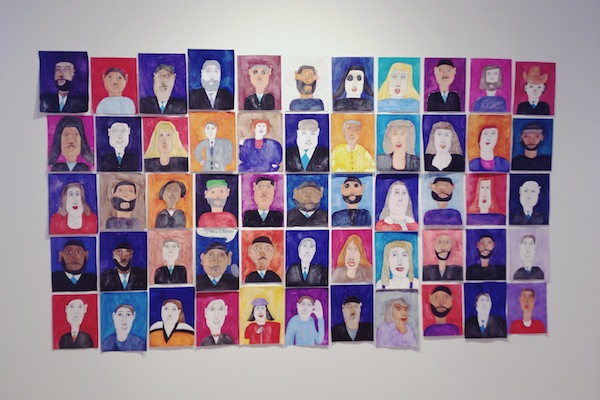
All Different Colors, the latest exhibit from Fleisher/Ollman, was made possible by a collaboration between the gallery and three different Delaware Valley art studios: Center for Creative Works, The Creative Vision Factory, and Oasis, which all work with individuals who are disabled in order to foster their creative talents and allow freedom through creative expression.
The show’s title, derived from a drawing by one of the featured artists, represents a group of visually sophisticated and expressive pieces of art made by a particular group of “outsiders,” who, 10 years ago, would not have had their art considered worthy of a blue-chip commercial art gallery.
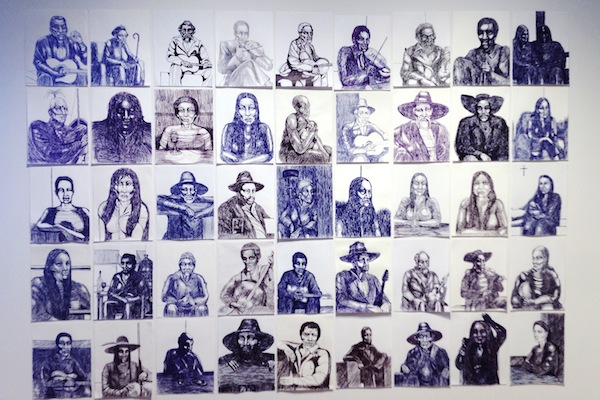
The gallery’s bright, airy space greets viewers with Alonzo Troy Humphrey’s series of portraits. The grid of enigmatic and alluring ballpoint-pen images presents a variety of men and women, young and old, each existing within a world of their own, solitary and self-contained. Whether it’s “Miss Mertle,” or “Steve,” or a “man with a wrinkled face and a flower lapel,” the sitters seem to carry within themselves a burden: one that we will never know but can observe in their eyes, the creases in their faces, and their varied positions. Humphrey has a distinct way of depicting human emotions in black, white, and blue.
Colorful works abound
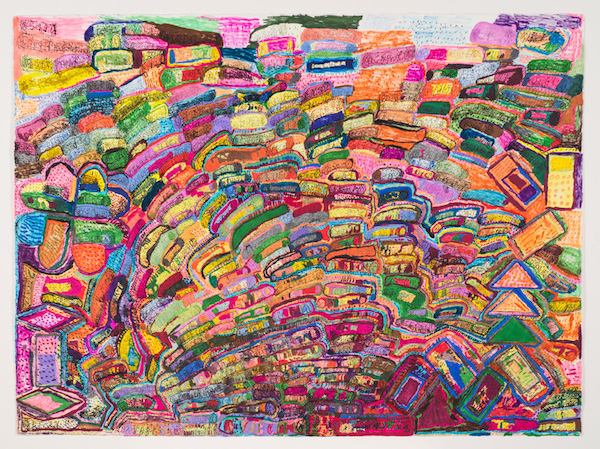
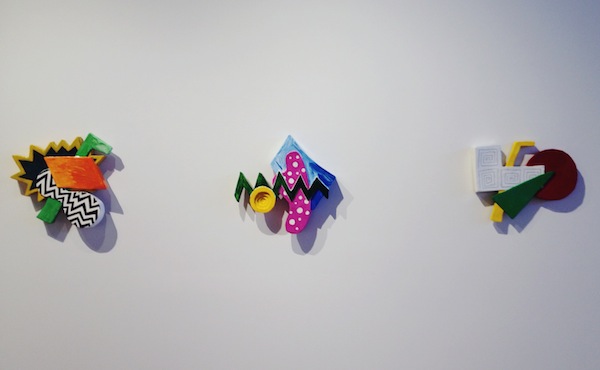
Jenny Cox, whose piece “All Different Colors” became the show’s title, creates rhythmic and colorful pieces with marker on paper. Her other displayed works are titled “Rainbow or Something” and “Sky or Something,” and employ a common visual theme of repetitive shapes, dots, and colors.
Further back in the gallery, William Slowik‘s sculptural cardboard, paint, and plaster pieces echo artist Elizabeth Murray‘s colorful, shaped-canvas paintings.
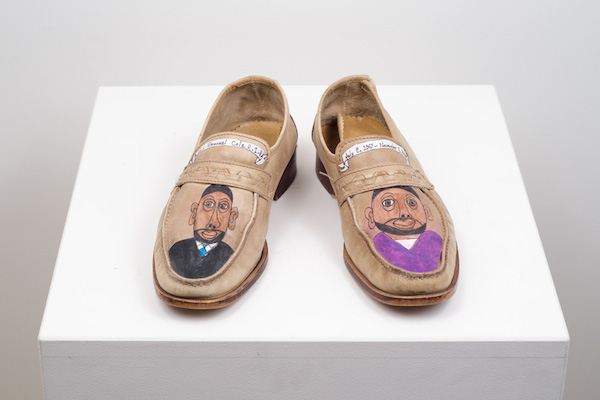
Samuel Abu Sesay‘s “Untitled (Shoes)” exists in its own glass case and dances on the borders of sculpture, painting, and a Duchampian Readymade. A pair of men’s leather shoes mounted with funerary portraits in watercolor sits on the ground below Sesay’s grid of colorful, child-like portraits.
Shaping the show’s perception
The major question that surrounds All Different Colors is whether viewers should read into it as an exhibit for those who are disabled, or an exhibit for artists who happen to have disabilities. Fleisher/Ollman’s director Alex Baker made it clear to me in a recent interview that the show’s purpose and general concept was left open to interpretation. Baker explained that he did not want to “police” visitors into holding any particular kinds of views or biases when moving through the gallery space. He also begs the questions: “Is anyone really outside of anything?”–especially in terms of art–and can a show like All Different Colors highlight the supposed outsider-ness of a group of artworks, while highlighting the true aesthetic sensibilities of the artists and vice-versa?
While these works of art may be therapeutic for the artists on one level, they should be in fact looked upon as serious and autonomous. The exhibit itself, which is masterfully curated with Baker’s own vision in mind, is a fresh and easily comprehensible layout of eye-catching pieces that complement one another. It presents itself with a specially flavored seriousness that only contemporary art can demand.
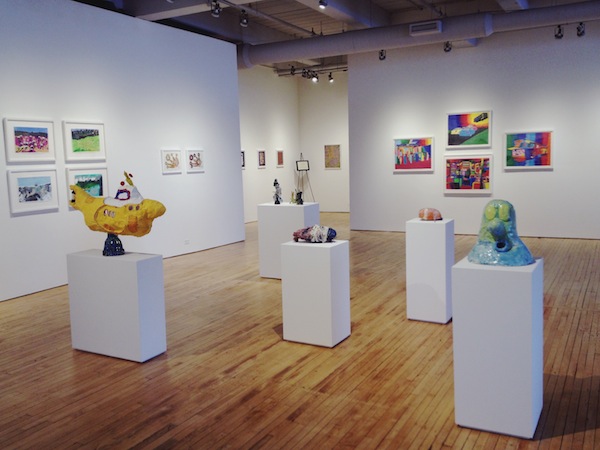
Each one of the 19 artists featured in All Different Colors bring something unique and captivating to the table, challenging the viewer’s perception of what is considered “real” contemporary art and what is considered “outsider”. Fleisher/Ollman once again creates an open-ended exhibit–one that exists beneath the label of “Outsider Art,” but means so much more than its original definition. This important exhibit sheds light on the dedication, talents, and realities of a group of amazing artists.
All Different Colors is on view at Fleisher/Ollman at 1216 Arch Street 5A, Philadelphia, PA until August 30, 2014.









